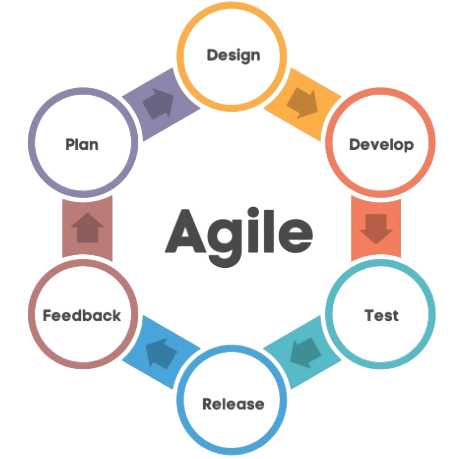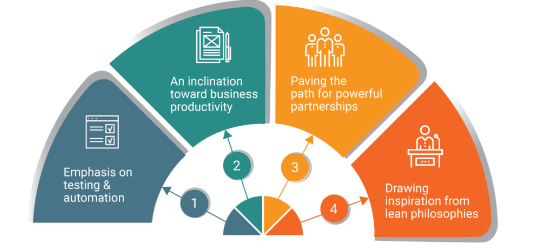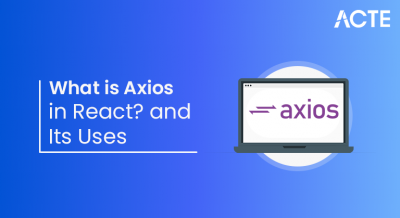
- Introduction to Agile and DevOps
- Agile Overview
- DevOps Overview
- Common Goals and Differences
- Misconception #1: Agile = DevOps
- Misconception #2: DevOps Eliminates Agile
- Misconception #3: Tools Define the Process
- Final Clarifications
Introduction to Agile and DevOps
In today’s dynamic software development landscape, organizations face increasing pressure to deliver high-quality applications rapidly and efficiently. To meet these challenges, many have turned to Agile and DevOps methodologies. Though often discussed together, Agile and DevOps serve distinct yet complementary purposes within the software development lifecycle. Agile emphasizes iterative development, customer collaboration, and responsiveness to change. It breaks down projects into smaller, manageable increments, allowing teams to adapt quickly based on user feedback and evolving requirements. This flexibility ensures that the end product aligns more closely with customer expectations. On the other hand, DevOps focuses on bridging the gap between development and operations teams through automation, continuous integration and delivery (CI/CD), and improved collaboration. DevOps aims to streamline software deployment, reduce manual errors, and accelerate release cycles, thereby ensuring that high-quality software can be delivered consistently and reliably. Despite their different focal points, Agile and DevOps share common goals: enhancing product quality, increasing delivery speed, and fostering a culture of continuous improvement. A common misconception is that Agile and DevOps are interchangeable or that adopting one negates the need for the other. In reality, they complement each other. Agile helps teams build the right product efficiently, while DevOps ensures that the product is released and maintained smoothly. When implemented together, these methodologies create a synergistic approach that enhances the entire software development and delivery process. Understanding their distinct roles and how they integrate is crucial for organizations aiming to stay competitive in a fast-paced digital world.
Agile Overview
Agile is a project management and software development methodology that prioritizes flexibility, collaboration, and rapid, iterative progress. Introduced formally in 2001 through the Agile Manifesto, Agile methodologies were developed as a response to the limitations of traditional, rigid software development approaches. At its core, Agile encourages frequent delivery of small, functional increments of a product, allowing teams to adapt quickly to feedback and evolving requirements. The Agile Manifesto outlines four core values that guide Agile practices. First, it promotes customer collaboration over contract negotiation, meaning customer feedback is continuously sought and incorporated, even late in the development process. Second, Agile values responding to change over following a plan, which enables teams to stay agile and adjust to new business needs or technical challenges without being constrained by an inflexible roadmap. Third, it emphasizes individuals and interactions over processes and tools, fostering strong communication and collaboration within teams to enhance creativity and problem-solving. Lastly, Agile favors working software over comprehensive documentation, focusing on delivering functional, usable software over producing excessive paperwork. Agile is commonly implemented through various frameworks, including Scrum, Kanban, Extreme Programming (XP), and Lean.

In Scrum, teams operate in fixed-length iterations called sprints, which typically last two to four weeks and culminate in a review and retrospective. Kanban, by contrast, uses a continuous flow model where tasks move through stages of development in a visual workflow. These frameworks enable teams to inspect and adapt their processes regularly, ensuring continuous improvement and better alignment with project goals and customer needs.
DevOps Overview
- DevOps Definition: DevOps is a culture, set of practices, and tools that integrate software development (Dev) and IT operations (Ops) to shorten the software development lifecycle and enable continuous delivery with high software quality.
- Collaboration Focus: The core goal of DevOps is to improve collaboration between development and operations teams by breaking down silos and fostering a culture of shared responsibility across the entire application lifecycle, from development and testing to deployment and monitoring.
- Continuous Integration (CI): Developers frequently commit code changes to a shared repository where automated tests run to validate the updates. This process helps detect issues early and ensures code quality.
- Continuous Delivery (CD): Code is automatically built, tested, and deployed to production environments, allowing for faster and more reliable software releases that respond quickly to user needs.
- Infrastructure as Code (IaC): Infrastructure is managed and defined through code, which creates consistent and reproducible environments, reduces manual errors, and speeds up deployment.
- Monitoring and Feedback: Continuous monitoring of applications and infrastructure collects performance data and user feedback. This helps teams identify problems quickly and improve the software proactively.
- Key Pillars: DevOps is built on the principles of collaboration, automation, and continuous improvement. These pillars enable organizations to deliver software efficiently, maintain high quality, and adapt rapidly to changing business demands.
- Improved Collaboration: Both methodologies encourage better communication and collaboration among teams. Agile promotes collaboration within development teams, while DevOps extends this collaboration to include operations teams as well.
- Faster Delivery: Both approaches aim to deliver high-quality software faster. Agile achieves this by breaking projects into small, manageable iterations, while DevOps accelerates the deployment process through automation and continuous integration.
- Customer-Centric Focus: Agile focuses on delivering value to the customer through iterative development, while DevOps ensures that the software can be rapidly deployed to meet customer needs.
- Continuous Improvement: Both Agile and DevOps encourage continuous feedback and improvement. Agile incorporates feedback at the end of each sprint, while DevOps relies on real-time monitoring and feedback from production environments.
- Focus Area: Agile focuses on how to manage and deliver software development projects, while DevOps focuses on automating the delivery and operations processes to ensure smoother and faster releases.
- Team Structure: Agile teams typically consist of developers, testers, and product owners, whereas DevOps involves collaboration between development, operations, and sometimes security teams (DevSecOps).
- Methodology vs. Culture: Agile is primarily a methodology for organizing work and teams, while DevOps is a culture that encourages collaboration and continuous delivery practices.
- Misconception About DevOps and Agile: A common misunderstanding is that DevOps replaces Agile. However, this is not true; both methodologies complement each other and can work effectively together.
- Agile’s Focus: Agile centers on the development process, emphasizing iterative cycles that ensure the software meets user needs through continuous feedback and adaptation.
- DevOps’ Focus: DevOps concentrates on automating and optimizing the release, deployment, and monitoring processes, ensuring smooth and reliable delivery of software.
- Creating a Seamless Pipeline: When combined, Agile and DevOps form an integrated pipeline where software is developed quickly, tested thoroughly, and deployed continuously without delays.
- Benefits to Agile Teams: Agile teams gain significant advantages from DevOps practices. For example, automated testing reduces manual errors and speeds up verification of new code.
- Continuous Integration (CI): DevOps CI processes allow developers to frequently merge code changes into a shared repository where automated tests validate the software, supporting Agile’s rapid development cycles.
- Faster Deployment: DevOps continuous delivery enables Agile teams to deploy new features swiftly and reliably, helping maintain the pace that Agile encourages while ensuring high-quality releases.
Common Goals and Differences

Misconception #1: Agile = DevOps
A common misconception in the software industry is that Agile and DevOps are the same or serve identical purposes. While both methodologies aim to enhance the speed, efficiency, and quality of software delivery, they address different phases and aspects of the software development lifecycle. Agile is primarily a methodology centered on the development process. It emphasizes flexibility, iterative progress, cross-functional collaboration, and the frequent delivery of incremental value to end-users. Agile helps development teams respond to changing requirements, involve stakeholders regularly, and ensure the product evolves in alignment with customer needs. DevOps, in contrast, is not just a methodology but a broader cultural shift and set of technical practices aimed at improving collaboration between development and operations teams. It focuses on automating the software delivery pipeline, including integration, testing, deployment, and monitoring. The goal of DevOps is to shorten the time between writing code and delivering it into production while maintaining high reliability, stability, and performance. While Agile practices are typically applied during the planning and development phases, DevOps extends these principles into deployment and operations. DevOps ensures that software developed using Agile principles is released quickly and safely into production environments, with mechanisms for continuous feedback and improvement. The two are highly complementary: Agile accelerates development cycles, and DevOps ensures those cycles result in reliable, scalable, and maintainable releases. Understanding their distinct roles helps organizations avoid the pitfall of treating them as interchangeable and instead leverage their combined strengths for end-to-end software delivery success.
Misconception #2: DevOps Eliminates Agile
Misconception #3: Tools Define the Process
A third common misconception is that tools alone define Agile and DevOps processes. While it is true that both methodologies rely on a variety of tools, such as Jira for Agile project management or Jenkins for continuous integration in DevOps, the true value of these approaches lies in the cultural and organizational changes they promote. Tools are important enablers, but they do not replace the need for a clear understanding of the principles that underpin Agile and DevOps. In Agile, tools can help with planning, tracking, and communication, but they are only effective when teams embrace core values like collaboration, adaptability, and customer involvement. Similarly, DevOps tools can automate testing, deployment, and monitoring, but without a culture of shared responsibility, continuous feedback, and operational excellence, those tools cannot deliver the intended benefits. Using version control systems or setting up CI/CD pipelines does not mean an organization is practicing DevOps. Likewise, having digital boards and sprint tools does not make a team truly Agile. These practices require more than just the right software. They demand a shift in mindset, where teams are empowered to work together, respond to change, and continuously improve their processes. Ultimately, both Agile and DevOps are about people, communication, and culture. Organizations that focus only on tools without addressing these deeper elements risk missing the full potential of these methodologies. Success comes not from what tools are used, but from how teams use them in alignment with the principles of collaboration, flexibility, and continuous improvement.
Final Clarifications
In summary, Agile and DevOps are complementary methodologies that can work together to enhance the software development lifecycle. Agile focuses on iterative development, customer collaboration, and flexibility, helping teams respond quickly to changing requirements and deliver value in small, manageable increments. DevOps, on the other hand, emphasizes collaboration between development and operations teams, aiming to automate the software delivery pipeline and ensure continuous integration, testing, deployment, and monitoring. While Agile improves how software is developed, DevOps ensures that the developed software can be released and maintained efficiently and reliably. By integrating both approaches, organizations can improve the speed, reliability, and quality of software delivery. This combination supports rapid innovation and better alignment with customer needs, making it easier for businesses to stay competitive in a fast-changing digital environment. It is important to understand the key differences between Agile and DevOps in order to apply them effectively. Common misconceptions, such as believing that they are the same or that one replaces the other, can lead to poor adoption and limited results. Another frequent misunderstanding is assuming that using the right tools is enough, when in fact both approaches require a cultural shift, collaboration, and a commitment to continuous improvement. When adopted thoughtfully and together, Agile and DevOps can create a streamlined, efficient, and adaptive development process that supports long-term success.



